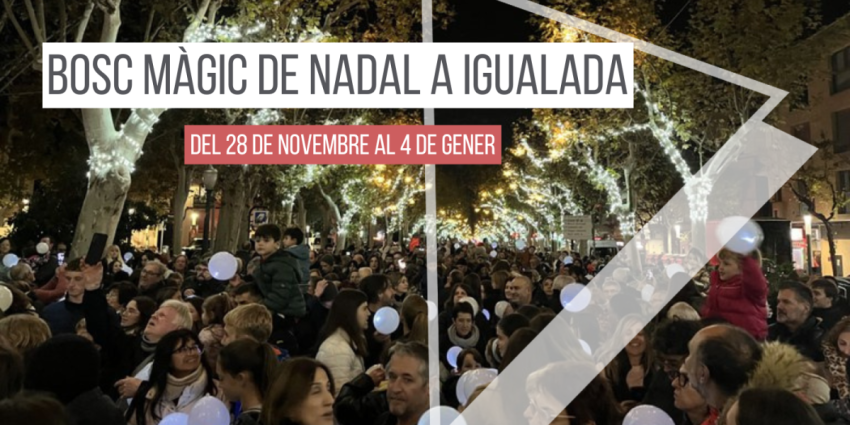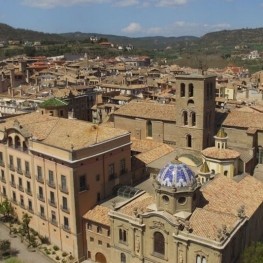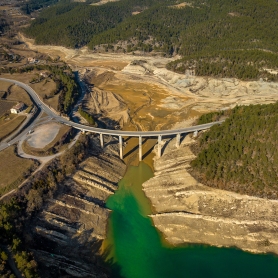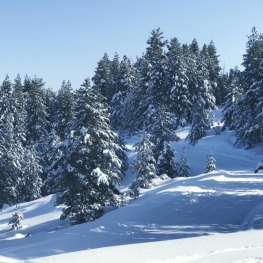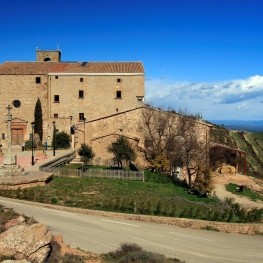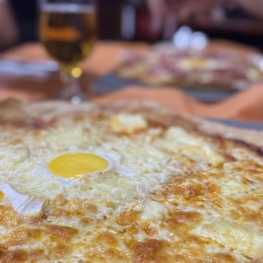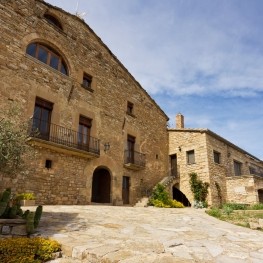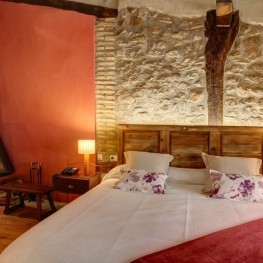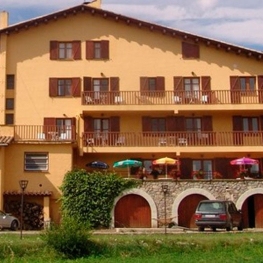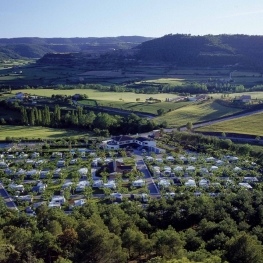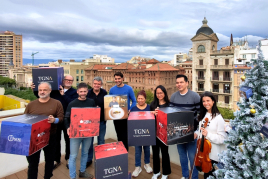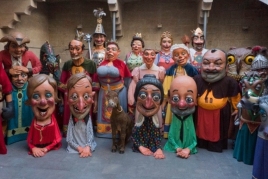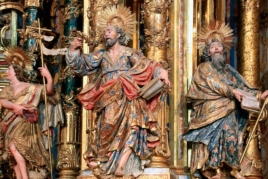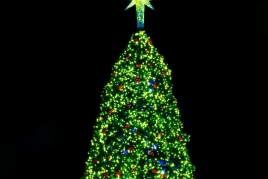The splendor of the Solsonès Baroque
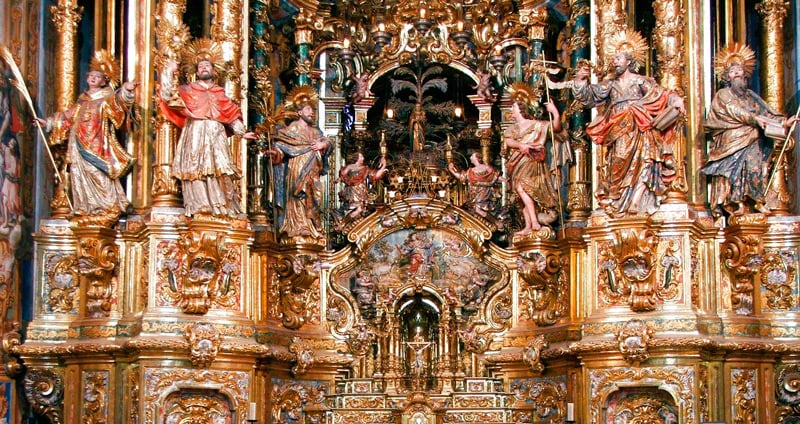
Baroque art invaded the religious buildings of Catalonia during the seventeenth and eighteenth centuries, and is characterized by its ornamental abundance. This period left a legacy of altarpieces of great value, works of great sculptural quality and full of thousand and one artistic details. Baroque was a basically religious and propagandistic art, at a time when society was experiencing an economic and social crisis, the church sought to impress the faithful and bring them to the Catholic faith.
The Solsonès has been able to conserve an important part of this patrimony, integrated in parishes and sanctuaries that generally are raised in rural environments. Knowing this rich heritage allows us to travel to the past and, at the same time, discover the exceptional natural environment of the region.
Baroque Space
 To start the route we head to Riner, contretament the Sanctuary of the Miracle. To get there we must take the C-55 road, and at the height of Cardona we enter this municipality and, once inside, we will take the BV-3001 road in the direction of the Miracle Sanctuary. If we come from Solsona we will take the C-75 towards Guissona, in a certain moment we will find the detour towards Riner and the Miracle.
To start the route we head to Riner, contretament the Sanctuary of the Miracle. To get there we must take the C-55 road, and at the height of Cardona we enter this municipality and, once inside, we will take the BV-3001 road in the direction of the Miracle Sanctuary. If we come from Solsona we will take the C-75 towards Guissona, in a certain moment we will find the detour towards Riner and the Miracle.
Before visiting the sanctuary church, we will visit the Espai Barroc, open in the summer of 2016. This exhibition space, located in the Casa Grande of the religious complex, presents the history of Baroque art, its historical context, the characteristics of this artistic style And brings us closer to the heritage of this period that is found throughout the region.
Sanctuary of the Miracle
 Once visited the Baroque Space and we know the general lines of this artistic expression, it is time to get into the subject knowing one of the main baroque altarpieces of the region, located on the main altar of the church of the sanctuary. This sculptural filigree has a height of 23 meters by 12 wide and is formed by three bodies or floors superimposed. This artistic element, made with poplar and pine wood, was the work of Carlos Morató, one of the greatest exponents of Catalan baroque sculpture. A complex work, begun in 1747 and finished in 1758, eleven years of work to which we must add, later, the fourteen years that it took to paint and polychrome the whole altarpiece, a task carried out by the Solsonian painter Antoni Bordons.
Once visited the Baroque Space and we know the general lines of this artistic expression, it is time to get into the subject knowing one of the main baroque altarpieces of the region, located on the main altar of the church of the sanctuary. This sculptural filigree has a height of 23 meters by 12 wide and is formed by three bodies or floors superimposed. This artistic element, made with poplar and pine wood, was the work of Carlos Morató, one of the greatest exponents of Catalan baroque sculpture. A complex work, begun in 1747 and finished in 1758, eleven years of work to which we must add, later, the fourteen years that it took to paint and polychrome the whole altarpiece, a task carried out by the Solsonian painter Antoni Bordons.
 The image of the Virgin of the Miracle, dating from the fifteenth century, presides over the whole from a dressing room integrated in the same altarpiece. This religious figure commemorates the legend of the apparition in 1458 of the Virgin to some shepherds, a few meters from the current sanctuary. From that moment on the place was consolidated as a place of religious devotion and ended up creating the current architectural complex formed by the church started in 1652, the Benedictine monastery that depends on Montserrat, the Casa Grande, former sanctuary shelter, and the houses of reception.
The image of the Virgin of the Miracle, dating from the fifteenth century, presides over the whole from a dressing room integrated in the same altarpiece. This religious figure commemorates the legend of the apparition in 1458 of the Virgin to some shepherds, a few meters from the current sanctuary. From that moment on the place was consolidated as a place of religious devotion and ended up creating the current architectural complex formed by the church started in 1652, the Benedictine monastery that depends on Montserrat, the Casa Grande, former sanctuary shelter, and the houses of reception.
Santiago de Riner
 From the Sanctuary we can go to the church of Santiago de Riner, by the LV-3002 road to Guissona, a road that we will find coming out of the sanctuary. This small temple presents the usual mixture of architectural styles that many churches have, the building is of the Romanesque period, it has been remembered since 1103, and presents the architectural characteristics of this period, but inside is another of the valuable Baroque altarpieces of the Solsonès.
From the Sanctuary we can go to the church of Santiago de Riner, by the LV-3002 road to Guissona, a road that we will find coming out of the sanctuary. This small temple presents the usual mixture of architectural styles that many churches have, the building is of the Romanesque period, it has been remembered since 1103, and presents the architectural characteristics of this period, but inside is another of the valuable Baroque altarpieces of the Solsonès.
Its construction dates from the seventeenth century and is presided over by the figures of San Isidro, Santiago and San Pedro Mártir, the set contains predella and panels that visually explain some of the most remarkable episodes of their lives.
San Pedro de Matamargó
After Riner we will go towards Matamargó, we will take again the road of the Miracle, the BV-3001, but now towards Cardona, at kilometer 8.9 we will find the turnoff towards Matamargó, integrated within the municipal area of Pinós. This is a territory full of forest around the stream of the same name, a farmland immersed in the most rural Solsonès.
 Among these dispersed fields stands the church of San Pedro de Matamargó, the magnificence of its interior and location in the middle of the rural environment have made it known as the "cathedral" of the peasants. The temple was built around 1654 and currently houses a large collection of Baroque art, not only for the altars that decorate the temple but also for other furniture elements such as confessional, chorus of singers or the high chair used in ancient times Give the sermons
Among these dispersed fields stands the church of San Pedro de Matamargó, the magnificence of its interior and location in the middle of the rural environment have made it known as the "cathedral" of the peasants. The temple was built around 1654 and currently houses a large collection of Baroque art, not only for the altars that decorate the temple but also for other furniture elements such as confessional, chorus of singers or the high chair used in ancient times Give the sermons
Of all this collection stands out, without a doubt, the splendid high altar built by Josep Pujol, member of a successful saga of master sculptors. It was built between 1792 and 1803 and it emphasizes its curious composition, in pyramidal form, as well as the figures of the apostles, of great dimensions.
In addition to the main altarpiece, the temple preserves other altarpieces that were also built by the Pujol lineage.
Solsona
Solsona, the capital of the region, also has its testimonies of baroque art, to find them we will have to go to the most emblematic monument of the city: the cathedral. The building is a mixture of architectural styles such as Romanesque or Gothic. Baroque is also present in different formats, the main element in this style is the main facade of the temple, located in the square of the Episcopal Palace of Solsona.
 In the interior of the temple predominates the gothic style and the austerity but in one of the lateral chapels is possible to see strongly Baroque art, thanks to the presence of the altarpiece of the Favor. This religious element, dated 1754, was made by Carles Morató, author also of the altarpiece of the Miracle, in this case, despite being of a smaller size, it also saves on sculptural figures and reliefs, all finished with different colors and golds.
In the interior of the temple predominates the gothic style and the austerity but in one of the lateral chapels is possible to see strongly Baroque art, thanks to the presence of the altarpiece of the Favor. This religious element, dated 1754, was made by Carles Morató, author also of the altarpiece of the Miracle, in this case, despite being of a smaller size, it also saves on sculptural figures and reliefs, all finished with different colors and golds.
Within the same complex of the cathedral you can also visit the Diocesan and Comarcal Museum where you can observe some artistic pieces of this period.
San Pedro de Madrona
Landscape and baroque are joined in San Pedro de Madrona, to get there you must follow, from Solsona, the C-149a road in the direction of Pinell de Solsonès until we reach the detour indicating Madrona, after four kilometers, after crossing the forests of Pinell, we arrive at San Pedro de Madrona, once there you have to visit the two temples, the old and the new, this second Baroque style.
 The ancient temple is located on top of a hill from where you can see a beautiful panoramic view of the natural surroundings where you are. The building, near the remains of the old castle, is unfortunately now in ruins, the apse stands out among the walls still standing, an imposing element where you can still see its Romanesque decoration.
The ancient temple is located on top of a hill from where you can see a beautiful panoramic view of the natural surroundings where you are. The building, near the remains of the old castle, is unfortunately now in ruins, the apse stands out among the walls still standing, an imposing element where you can still see its Romanesque decoration.
A few meters below the new temple rises, a large baroque structure that stands out in the midst of the natural landscape that surrounds it. Its interior is notable for its spaciousness and monumentality, the central nave is flanked by lateral chapels, above these there is a corridor of grandstands that open to the central nave through several balconies. A surprising element of its interior are the mural paintings that occupy all the walls. This decoration imitates marble coverings, in the upper walls of the central nave, among the balconies that make of tribune, are represented the twelve apostles, also, as curiosity, to the back of the highchair can be seen painted a hieroglyph of unknown meaning.
The Church of San Lorenzo de Morunys
We will finish the route with a visit to San Lorenzo de Morunys, to arrive we will arrive from Solsona, taking the C-55 towards Manresa, shortly after leaving the county capital we will find the crossing to go to San Lorenzo de Morunys.
 One of the main elements of the municipality is its church, there we will find one of the most outstanding elements of Catalan baroque. The temple, of style and Romanesque period until 1936 housed a great collection of altarpieces, many of them baroque, but the wreckage caused by the war made the great majority of them disappear, even so, it did not lose all the baroque heritage, since The main altar and the chapel of the Virgen dels Colls were preserved . This chapel is a spectacular space where the exuberance and decorative overload of the baroque can be seen in all its magnitude. It was decorated between 1773 and 1784 by Josep Pujol, author also of the main altarpiece of San Pedro de Matamargó, which has been mentioned previously.
One of the main elements of the municipality is its church, there we will find one of the most outstanding elements of Catalan baroque. The temple, of style and Romanesque period until 1936 housed a great collection of altarpieces, many of them baroque, but the wreckage caused by the war made the great majority of them disappear, even so, it did not lose all the baroque heritage, since The main altar and the chapel of the Virgen dels Colls were preserved . This chapel is a spectacular space where the exuberance and decorative overload of the baroque can be seen in all its magnitude. It was decorated between 1773 and 1784 by Josep Pujol, author also of the main altarpiece of San Pedro de Matamargó, which has been mentioned previously.
The space is presided over by the dressing room and the image of the Virgen dels Colls, the decoration around the dressing room fuses with the decoration of the walls and the dome that crowns the space, creating a complete baroque space, all covered with sculptures and reliefs Which show a baroque filigree with an infinite amount of detail. Once you visit this chapel, you can extend the visit to other spaces adjacent to the church, the cloister or the museum of the Vall de Lord where you can find some baroque elements that had been part of the interior decoration of the temple.
In this route reference has been made to the most significant baroque elements of the area, but the Baroque of Solsonès does not end here, places of the region such as San Pedro Martir de Peracamps, Sant Ponç de Prades de la Molsosa, San Andrés de Clarà or the Sanctuary of Massarúbies also contain elements of this period, rural places that allow to deepen still more in this artistic style and, at the same time, to know more closely the landscape of this zone.
What to do
Solsona Experience, descobreix el Solsonès
SolsonaExperiential guided tours of the Solsonès region for all audiences, groups and…
Globus Pirineu
Solsona (a 2.1 Km)Enjoy the opportunity and experience to discover the richness of the landscape…
Estació d'Esquí Tuixent - La Vansa
Josa i Tuixent (a 10 Km)Enjoy 30km of multi-level circuits for cross-country skiing and snowshoeing at the…
Where to eat
Taverna de La Vansa
La Vansa i Fórnols (a 14 Km)A self-managed mountain tavern in Espai La Vansa, ideal for enjoying local…
Bar Restaurant El Jardí
Sant Llorenç de MorunysThe Bar-Restaurant El Jardí de Sant Llorenç de Morunys offers traditional cuisine…
Bar Restaurant Xato
Gironella (a 26.4 Km)Order pizzas, burgers, tapas... at Xato Bar-Restaurant and we'll deliver them to…
Where to sleep
Les Corts de Biosca
Sant Mateu de Bages (a 8 Km)A well-equipped, comfortable agritourism property with splendid views, just an hour from…
Hotel La Freixera
SolsonaDiscover Hotel la Freixera, a charming boutique hotel located in the middle…
Hostal Cal Franciscó
Gósol (a 12.2 Km)The hostel is located at a crossroads that leads to different routes,…
Càmping el Solsonès
Solsona (a 1.8 Km)Camping El Solsonès offers fully equipped wooden bungalows, a new camping area,…

